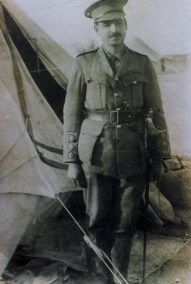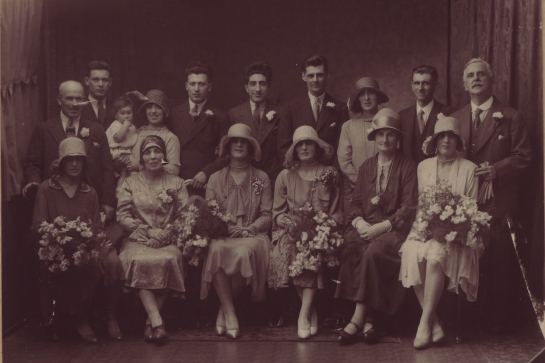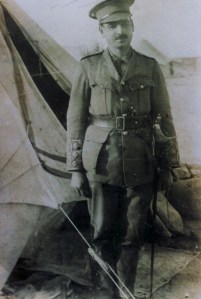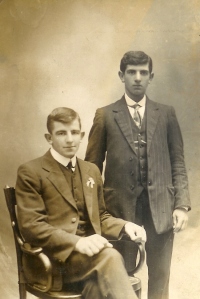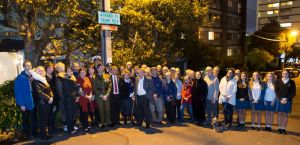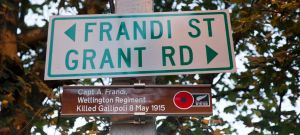Blog Comments My Life and Rhymes -A Life In Two Halves
Italian Connections
From Verna Crowley, Otaki, New Zealand.
The Mystery Surrounding Ateo Frandi’s Colonial Auxiliary Forces Long Service Medal.
*****************************
Verna Crowley
18 May 2014
Hi Anne, I came across your story while I was researching Ateo Frandi, born 04 May 1873, died [8th] May 1915. I have in my possession a WWl medal with his name [inscribed] on it. It was issued in 1911 for his long service in the Colonial Auxiliary Forces. I would dearly love for it to be returned to his family, he has no direct issue but if you know of a family member I can pass it onto I would appreciate it…. Thanks, Verna.
Verna
20 May, 2014 .
Good morning Anne,
I have not heard from you via my email today so I thought I would try again through here.
I realise you might be thinking that maybe this is some sort of hoax, but I can assure you that I do have the medal and I am very much hoping to be able to return it to his family, where it rightfully belongs, (after 100 years).
I can tell you it came into my possession through my grandmother, how she happened to have it I do not know, but she kept it safe along with her first husband’s WWl medals. This year being significant for WWl veterans, I was going through all the paper work and medals and as this medal did not have a ribbon, I was going to have it re-ribboned, it was only then that I noticed Ateo’s name [inscribed] on the side and I thought I would try and locate his family to return it.
The inscription reads: No. 179 COL-SERG. A. FRANDI ZEALANDIA RIFLES (1911).
Please let me know where you want me to send it
Thanks, Verna
********************************************************
***************************************************************
Anne Frandi-Coory
Hello Verna, lovely to hear from you. I would so love that medal and I would treasure it as would my family. My mother, Doreen Frandi,was very close to Italia, Ateo’s sister, and Italia and Ateo were devoted to each other. Otherwise, I truly don’t know anyone else to recommend. Thank you for making contact.
I am so glad you found me, Verna, and I did not for one moment disbelieve you; I would so love the medal which I would treasure as would my family.
Because of all the awful things that happened to my mother and me, I don’t have any mementos from the Frandi family, so this medal will mean a lot to me and the wider Frandi family.
The only memento I do have is a set of broken Rosary beads in a tiny leather case cherished by my mother, Doreen. Her father, Alfredo, was Ateo Frandi’s youngest brother and while Ateo died before she was born, Doreen knew Ateo’s sister, Italia, very well. By all accounts, Italia had a soft spot for the troubled Doreen. Ateo and his only sister, Italia, were close in age, both born in Pisa and devoted to each other. Italia’s two daughters are long deceased and Italia’s only grandchild didn’t have any children. I truly don’t know anyone else to recommend.
Thank you once again, and please let me reimburse you for the cost of postage.
Kind regards, Anne.
****************************************************
Verna
Good morning Anne,
Ok …Firstly to answer your question: Where do I fit into the Frandi family? Simple answer , I don’t.
This may take a bit of explaining but I will try and keep it as short as possible.
I’m sorry…when I did not receive your first email I thought maybe you did not believe I had a medal belonging to Ateo. I had to put myself in your shoes and think, who is this person who says (quite out of the blue) hey…I have a medal, it is more than 100 years old and does anyone in your family want it? So I thought if I told you what the inscription said it would let you know I was for real.
You may now be thinking that if I don’t fit into your family anywhere, how do I happen to have the medal?
As I said it was in my grandmother’s possessions along with her first husband’s WWl medals and papers. I don’t know how she came to have Ateo’s medal and I don’t know if she knew him. She may have, the time frame fits. Back then in WWl and also in WWll a lot of things associated with the wars were not kept. The men did not talk about, or want any reminders of their time fighting overseas. Well that was the case in our family, so as children we never knew about what our mothers and grandmothers kept hidden. But my grandmother had treasured the reminders of her husband that she had been given (married in 1916); he never came home. He is buried in Cologne cemetery in Germany. She only had one surviving child to that marriage, my mother. My grandmother later remarried and had more children.
When my grandmother died, what she had in her possession was handed down to my mother, who had a life similar to my grandmother’s. She also lost her first husband, in WWll; he also never came home and is buried in Belgium. My mother later remarried, and had three children. That’s where I come in. My mother obviously kept her husband’s medals together with her father’s medals. She died in 1971 and my father remarried. We three children from his first marriage were not given anything of our mother’s after she died.
When my father died in 2009, my sister and I (my brother had since passed away) I had to contest his Will to receive some things that belonged to our mother…long story.
Some of the few things we received were the war medals; not my father’s war medals, but my mother’s first husband’s medals and those of her father’s. The medals have been kept in the original box that my mother kept them in.
Verna continues …
in her letter which accompanied Ateo’s medal which she later posted to me:
I was looking through your blog and read your post, [link]: Letters To Anne Frandi-Coory which included the two letters from your mother’s youngest sister, Anne Albert. I was a bit blown away and I truly believe that Ateo’s medal was meant for you all along. I am convinced a higher power, maybe my mother, encouraged me to find you. If all three circumstances hadn’t come together at around the same time, the medal would probably have been lost forever and never returned to its rightful home:
- My sister and I received, in 2009, the few things that belonged to our mother:
- Your memoir and Frandi family history [link] Whatever Happened To Ishtar? was published in 2010.
- This significant ANZAC year of 2014 prompted us to scrutinize carefully the papers and medals we received as a result of contesting our late father’s Will, discovering that one of the medals had a different name on it.
I couldn’t get that medal out of my mind and so I decided to research the name and other details inscribed on the medal. I found a few clues and of course your web site and Blog. If we had rightfully received our mother’s treasures years ago, and tried to find Ateo’s descendants at that time, we would not have been able to trace any and that would have been the end of it.
I now know that your mother, Doreen Frandi, lived at 56 Hewer Crescent, Naenae, Lower Hutt, in Wellington …
We lived at 28 Hewer Crescent. It seems from your aunty Anne’s letter that Doreen and her son Kevin lived there for some years prior to 1980. She also mentions that Doreen worked at a factory close by. I would think that would be the Philips factory; it was a large employer in Naenae for many years and most of Naenae worked there at some stage. They employed hundreds of people at any given time. Doreen’s next door neighbours at number 54 were the Hardies; a father and three children: Trevor, Roberta and Marianne. Roberta worked at the factory for many years, possibly alongside Doreen.
Many connections, but the mystery remains: how did Verna’s mother come to have Ateo Frandi’s war service medal in her possession? Did Doreen give it to Verna’s mother for safe-keeping or perhaps Verna’s grandfather and Ateo were war mates and Italia gave the medal to him? Perhaps someone reading this post could enlighten us?
Verna.
***********************************
READ here about the naming of Frandi Street, Wellington, NZ, named in memory of Ateo Frandi and the Frandi family who lived nearby for many years:
[Link here] FRANDI STREET
*Note: Anne Frandi-Coory has since passed the medal onto Ateo Frandi’s great nephew who is currently serving in the New Zealand Armed Forces.
Aristodemo and Annunziata Frandi are the parents of Ateo Frandi and Anne Frandi-Coory’s maternal grandfather, Alfredo, who was Ateo’s youngest brother.











